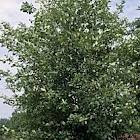Rose root is so-called because when the root is dried it smells like roses, and you can distill it to make rose-water. It is a member of the Crassulaceae family which makes it a relative of the orpine, (Sedum telephium), kidneywort (Umbilicus rupestris) and the houseleek (Sempervivum tectorum).
Rose root is native to the Arctic , Iceland, North America, colder places in Asia and Britain and Ireland as well as to Siberia and north western China . You can eat the young succulent leaves raw in a salad as it adds a slightly bitter taste to mixed greens. You can cook these like spinach too and the stems can be cooked in the same way as you cook asparagus. These were fermented and eaten by some Native American tribes.
 This plant is a popular remedy for stress relief now on both sides of the
This plant is a popular remedy for stress relief now on both sides of the Rose root has been used as a general tonic for more than 3,000 years in Eastern Europe and China , and more than 300 studies have been carried out using rose root as a treatment for people.
The plant flowers between May and August and can usually be found in rocky places, in crevices on rocky mountains and on cliffs near the sea. Traditionally the flowers have been used as a decoction for stomach aches, but they have also been eaten raw to treat T.B.
 The root is supposed to enhance male potency, yet another plant which is believed to have aphrodisiac properties. Studies have shown that it can reduce fatigue, so is useful for athletes, and it has the effect of decreasing cortisol levels in the blood. (Cortisol is the stress hormone.) It is considered an adaptogen which means that it can relieve physical, mental and emotional stress, and this is why it is so popular in modern times.
The root is supposed to enhance male potency, yet another plant which is believed to have aphrodisiac properties. Studies have shown that it can reduce fatigue, so is useful for athletes, and it has the effect of decreasing cortisol levels in the blood. (Cortisol is the stress hormone.) It is considered an adaptogen which means that it can relieve physical, mental and emotional stress, and this is why it is so popular in modern times. It has been found to have effects on serotonin and dopamine, which are present in the brain. One study showed that it could increase the levels of serotonin by 30 per cent, so it is a mood enhancer as people have reported after using it. It can lift anxiety and is useful for mild depression.
Studies have shown that it has anticancer effects too and can help the cardiovascular system, promoting a healthy heart. It can help with insomnia and sleep problems and can also help poor appetites and decrease irritability. It also seems to lower high blood pressure.
It has been used without any reports of serious side effects, but even so you should only use it under the close supervision of a doctor.






























